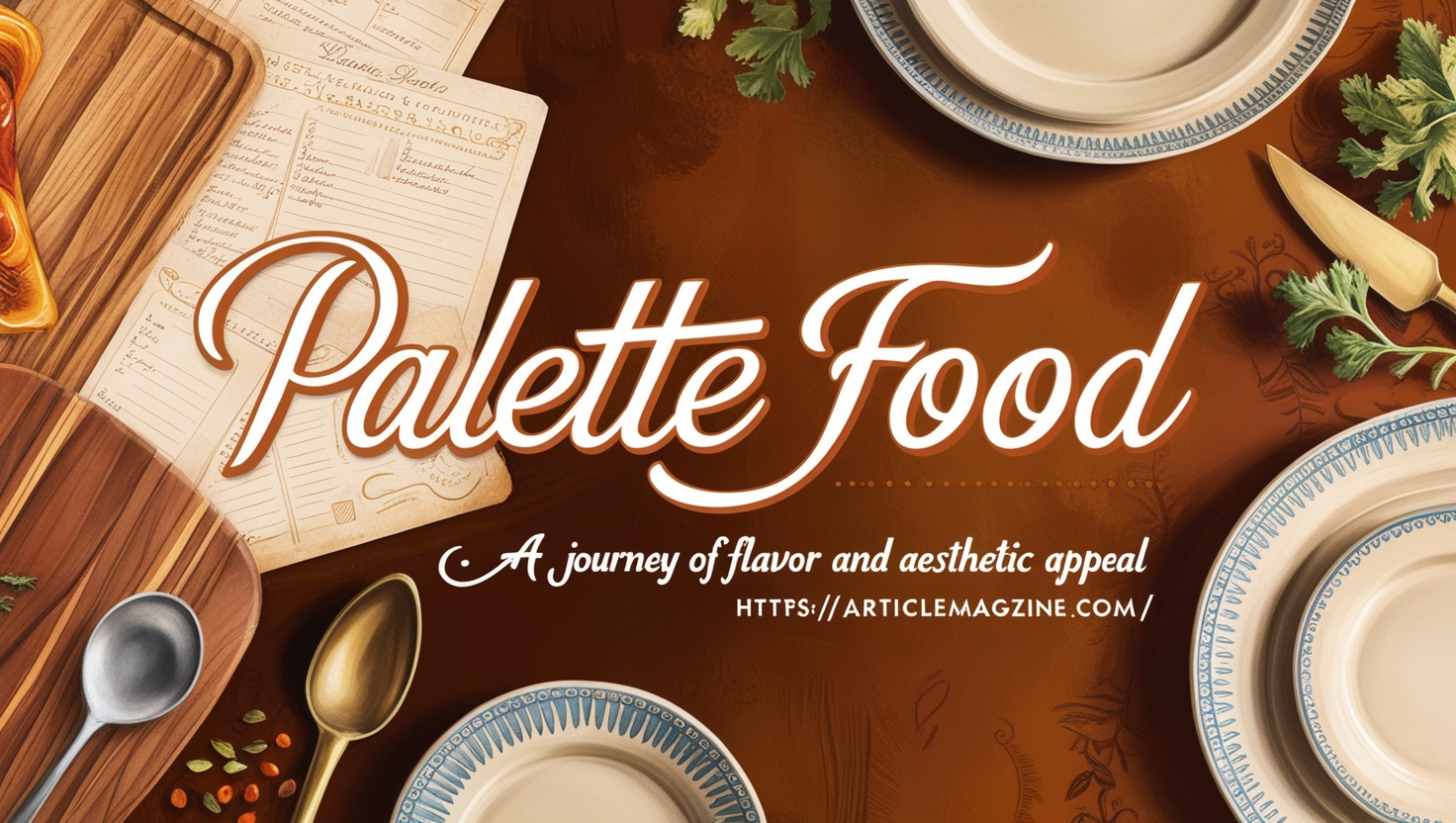Introduction
When we think of food, taste is often the first thing that comes to mind. However, food is much more than just taste. It combines flavours, textures, aromas, and aesthetics for a complete dining experience. Enter palette food, a trend in the culinary world where the presentation of the food is treated like art, with a careful balance of colours, textures, and flavours. This approach satisfies the taste buds and stimulates the eyes and mind, enhancing the overall experience. So, what exactly is palette food, and why is it gaining popularity? Let’s take a deeper dive.
What is Palette Food?
Palette food is a culinary concept in which chefs use various vibrant ingredients to create visually appealing dishes. The plate becomes the chef’s canvas, and the ingredients are the paints. Each component of the dish is carefully chosen not only for its taste but also for its colour, texture, and contribution to the visual composition of the dish.
Much like a painter uses a range of hues and shades to create a masterpiece, chefs working with palette food select ingredients that contribute to a harmonious and eye-catching presentation. For instance, fresh greens, bright yellows, deep reds, and other bold colours can make a dish stand out, drawing the diner’s attention and heightening their anticipation before the first bite.
The Connection Between Sight and Appetite
It’s often said that “we eat with our eyes first.” This is the foundation of palette food. Studies have shown that visual stimuli can significantly affect our perception of taste. A beautifully presented dish can trigger pleasure and anticipation, enhancing the dining experience. A colourful and artfully arranged dish stimulates the brain, creating excitement and eagerness to eat. This is a critical element in the palette food concept—by playing to our visual senses, it elevates the meal before it even reaches our mouths.
The artistry of palette food is not just about piling random colours onto a plate. It requires careful thought and skill to combine ingredients that work together visually and taste-wise. Each element has to serve a purpose, whether to add a contrasting flavour or texture or simply to balance the overall visual appeal of the dish.
Health Benefits of Palette Food
Beyond its aesthetic value, palette food often encourages using fresh, natural, and nutrient-rich ingredients. Brightly coloured fruits and vegetables like carrots, beets, blueberries, and spinach are commonly used in palette food. These vibrant ingredients are often rich in vitamins, minerals, and antioxidants, promoting better health.
Eating a colourful diet ensures a variety of nutrients. For example, orange foods like carrots are high in beta-carotene, which is beneficial for eye health, while green vegetables like spinach are packed with iron and other essential vitamins. The more colourful the dish, the more likely it is to contain a wide range of beneficial nutrients.
Palette food emphasizes the use of whole, minimally processed ingredients, which aligns with the growing trend toward clean eating. This approach’s beauty is that it naturally encourages people to make healthier choices. When your plate is filled with fresh, vibrant ingredients, it becomes easier to make nutritious food choices without feeling deprived.
Palette Food in Fine Dining
The concept of palette food has been embraced by fine-dining restaurants and chefs worldwide. In many high-end establishments, chefs are pushing the boundaries of traditional plating techniques, creating dishes that look more like works of art than meals. These chefs carefully consider the colours, shapes, and textures of the ingredients they use to create an unforgettable dining experience.
An excellent example of palette food in fine dining is the use of edible flowers, sauces, and garnishes arranged in a way that mimics modern art. In many cases, the dishes are almost too beautiful to eat. Yet, they are made with flavours that work together perfectly, ensuring the dish tastes as good as it looks.
How to Create Palette Food at Home
Creating palette food at home might seem daunting, but anyone can do it with a bit of creativity and a few basic principles. Start by selecting fresh, vibrant ingredients. Think about the colours on your plate—try to include at least three different colours in every meal to make it visually appealing.
The texture is also essential in palette food. Combine soft, creamy ingredients with crunchy elements to keep things interesting. For example, if you’re making a salad, mix leafy greens with roasted vegetables, nuts, and a colourful vinaigrette for a dynamic and vibrant dish.
Finally, remember the plating. Use the plate as your canvas. Arrange the ingredients thoughtfully, considering the balance of colours and how each element interacts with the others. It might take some practice, but with time, you can create stunning dishes that are nutritious and beautiful. It is more than just a trend; it’s a philosophy combining the art of presentation with the science of nutrition.
By focusing on the visual appeal of a dish, palette food elevates the dining experience to a whole new level, making it as much about the mind as it is about the stomach. Whether enjoying a meal at a high-end restaurant or creating a colourful dish at home, palette food reminds us that food should be a feast for all the senses, not just the taste buds. So, next time you prepare a meal, think about the palette you’re working with and create something that tastes great and looks like a masterpiece on a plate.
Conclusion
Palette food represents a beautiful fusion of culinary art and nutrition, where taste, aesthetics, and health intersect. Emphasizing the use of fresh, colourful ingredients elevates the visual appeal of dishes and promotes a balanced and nutrient-rich diet. This approach transforms food into a multisensory experience, making meals more enjoyable and satisfying. Whether at a fine dining establishment or in your kitchen, embracing the principles of palette food encourages creativity and mindful eating, reminding us that food is meant to nourish the body and delight the senses.
